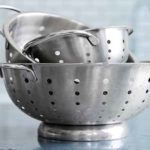How Many Watts Your Grow Space Needs
Are you new to the concept of growing with LED’s? If you are, then this post will help to determine how much wattage your plants will require for their vegetative and flowering stages. With LED grow lights, there should be 20 watts or more of lighting power per square foot of growing area.
The wattage is not the only metric that should be considered to determine the coverage area or effectiveness of an LED grow light. The wattage of the light will help approximate the appropriate size of space needed. However, to measure the full intensity of light, the correct metric to apply over a given area is PPFD (photosynthetic photon flux density). PPFD is a measure of the number of photons in the 400-700nm range of the visible light spectrum (photosynthetic active radiation or PAR) that fall on an area per second.
The Wattage of LEDs:
When considering the wattage of LED lights, there is the nominal wattage and the input wattage. The nominal wattage is typically the number stated in the name of the light. This is a product of the maximum wattage of the LED chips, multiplied by the number of chips. For example, a 600-watt light may have 200 x 3-watt chips, and the nominal wattage is 600 watts. However, the actual input wattage that the light uses is always lower, because the 3-watt chips never run to 100% capacity, to avoid thermal breakdown. Depending on the wavelength of light emitted, each 3-watt chip may draw from 1.8 watts to 2.5 watts. Thus, a 600W light my only have an input power of 350-400 watts.
In a grow space, the wattage per square foot in the area could increase from 20 watts to about 50 watts per square foot. If the total light intensity per square foot goes above this, the light may become excessively strong and lead to poor growth of the plants. When using G8 LED grow lights from Dorm Grow, the lights will have the appropriate coverage area published on the products.
What’s The Appropriate Wattage per Square Area?
Keep in mind that G8 LED grow lights come with recommended grow area coverage amounts on their products. For example, if you go for a G8-900 Veg/Flower will cover about 24 square feet (6’ x 4’). These guidelines are provided to help growers to plan their space for indoor growing appropriately.
In all cases, it’s possible to decrease or increase the plant lights depending on the specifications of the growing project. As mentioned above, indoor growers should also consider the intensity of the light, regarding PPFD.
The recommended coverage areas per square foot for grow lights are as below:
• The G8 LED 900W has 540 watts of input power and 23 watts per square foot
• The G8 LED 600W has 380 watts of input power and 21 watts per square foot
• The G8 LED 450W has 270 watts of input power and 23 watts per square foot
• The G8 LED 240W has 140 watts of input power and 23 watts per square foot
If you plan to use supplemental lighting like the 90W flower booster, it will add about 8 watts per square foot. Just know that when you use this light, it will increase the wattage in the red colors from 630nm to 660nm. The 90W flower booster is not a standalone light but should be used alongside other indoor lights to increase the total watts per square foot during the flowering phase.
Conclusion:
If you have less than the required amount of lighting, the potency and yield of your crop will be subpar. Stressing this point is important because the right amount of light in your grow room will ensure a high yielding crop. However, avoid the pitfall of excessive light and control the heat.
Keep in mind that proper experimentation is the best method to determine a good solution for plants. If the plants do not receive the right amount of light, they will grow spindly. Plants stretch to reach the light source, so the distance is a critical factor. We have provided some necessary information you about wattage required for your indoor grow space. For more information, consult providers and manufacturers of LED grow lights.








